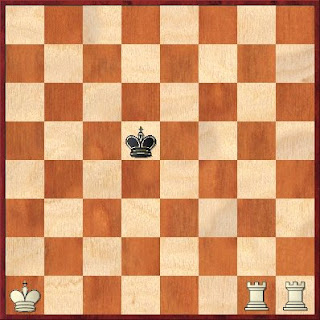AJ V Elizabeth
Harry V Aidan
Dylan V Caroline
AJ checkmated Elizabeth on board one, but Elizabeth had AJ on the ropes. I have noticed that Elizabeth starts chess games very well and is a competent player, but drifts after the middle game with no plan (sounds like you?). Hopefully we can help her focus her ideas and I'm certain she can become a class player. AJ has become the big fish in our little pond. He is 9!
Aidan finally overcame Harry in a hard fought game that went into a winning endgame for Aidan. Aidan was gracious in victory which is as important as being gracious in defeat. As well as being a top chess player he's a top bloke too.
Dylan who is 5 over powered Caroline 7. I was pleased to see Caroline competing in the competition, as she has just started coming to the club. Her game is noticeably improving and I am sure she will start picking up points soon.
The current standings are:
| Number | Name | R1 | R2 | R3 | Score |
| 1 | AJ | 9w 3 | 2b 3 | 5w 3 | 9 |
| 2 | Harry | 3b 3 | 1w 1 | 4w 1 | 5 |
| 3 | Dylan | 2w 1 | 5b 1 | 10w 3 | 5 |
| 4 | Aidan | X | 7w 1 | 2b 3 | 4 |
| 5 | | X | 3w 3 | 1b 1 | 4 |
| 6 | James | X | 9w (3)d | X | 3 |
| 7 | | X | 4b 3 | X | 3 |
| 10 | Caroline | X | X | 3b 1 | 1 |
| 8 | Zack | X | X | X | 0 |
| 9 | Sarah | X | X | X | X |






















